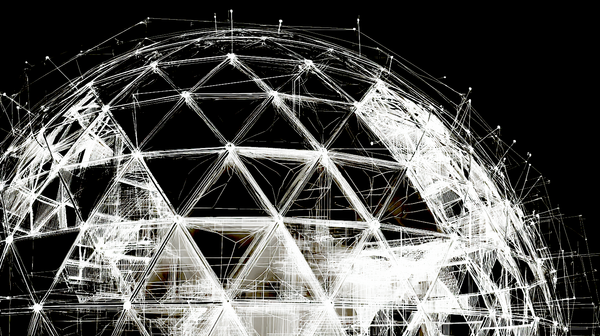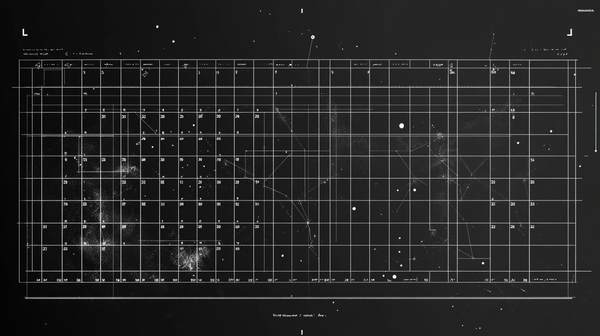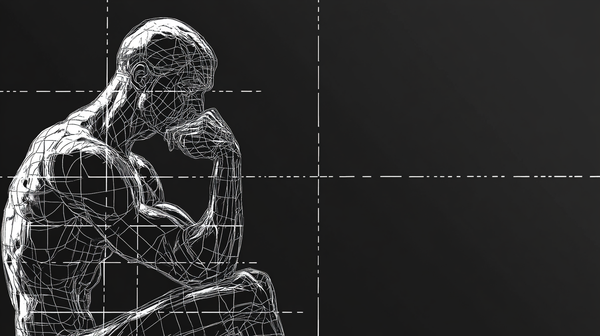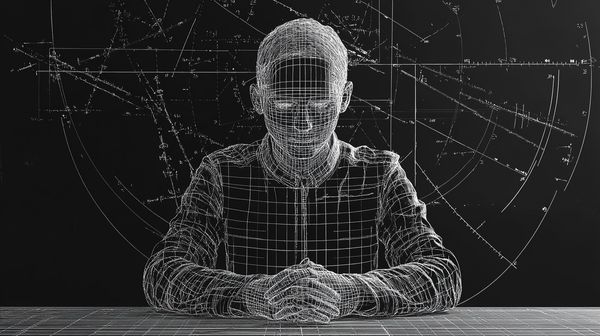Reality Is Not Truth: A Philosophical Framework for Distinguishing Constraint from Correspondence
Treating reality and truth as interchangeable undermines decision-making and adaptation. Reality is force and form constraining possibilities. Truth is an accurate model of reality within contexts. This distinction provides operational criteria for evaluating knowledge claims.
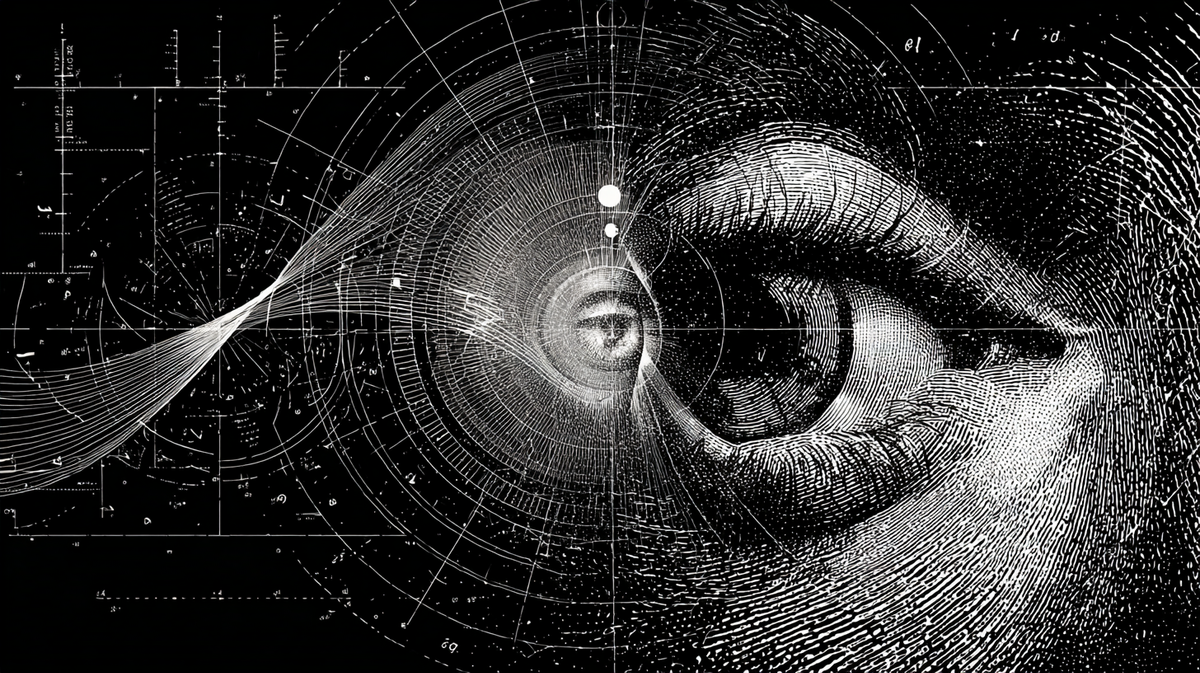
One of the persistent confusions in epistemology and ontology comes from treating reality and truth as synonyms. We speak of "facing reality" and "telling the truth" as if they reference the same phenomenon. They don't. This conflation produces specific dysfunctions across individual cognition, institutional policy, and philosophical discourse. This essay establishes a distinction: reality is force and form constraining possibilities, encountered locally at the scale of a system's capacity; truth is an accurate model of that reality within specific contexts, requiring particular structural capacities for its construction. Understanding this distinction resolves longstanding philosophical tensions while providing operational criteria for evaluating knowledge claims.
This framework synthesizes insights from structural realism, pragmatism, embodied cognition, and systems theory while making three distinctive contributions. First, it grounds reality in constraint-patterns encountered at system boundaries rather than abstract facts or states of affairs. Second, it specifies five operational properties necessary and sufficient for truth-bearing capacity, providing empirically testable criteria. Third, it integrates locality constraints with correspondence theory, maintaining objectivity without naive realism or relativistic collapse. The result resolves tensions that each separate tradition faces while providing practical guidance for knowledge construction and adaptation under real-world conditions.
I. Core Distinctions
Reality as Constraint
Reality operates independently of interpretation or representation. It is force and form experienced as constraint: the collapse of possibilities encountered at system boundaries. We experience bodies pulled downward, unable to simply float away. We experience applications rejected, relationships severing, physical capabilities declining. We encounter options collapsing: this path becomes unavailable, that choice becomes impossible, this outcome becomes unreachable.
These constraints operate at boundaries where systems interact with forces and forms. Some constraints we represent through conscious models, but we remain subject to countless constraints at boundaries we never consciously register. A person walking encounters gravitational constraint without modeling Newtonian mechanics. An organism responds to temperature gradients without representing thermodynamic principles. Consciousness enables representation but doesn't exempt systems from experiencing reality as constraint at boundaries.
This understanding positions reality as operationally prior to any system's capacity to model it. Forces constrain bacterial motion through chemical gradients whether or not those bacteria possess representational states about chemistry. Forms limit structural possibilities for all systems regardless of their modeling capacity. Reality is what pushes back, what maintains structure despite preferences, what continues operating when all models fail.
Definition: Reality is force and form constraining possibilities, encountered locally at the scale of a system's boundaries and capacities. What constitutes functional reality for any particular system is force and form that (a) lies within that system's causal reach and (b) interacts with that system's boundaries to collapse behavioral possibilities.
The Locality Thesis
Reality's locality requires specification. We experience reality as constraint at our boundaries, but what we experience depends on which forces and forms can reach us and interact with our structure. This generates the locality thesis:
A force or form constitutes functional reality for a system if and only if it (a) lies within that system's causal reach and (b) can interact with that system's boundaries to collapse behavioral possibilities.
This operational criterion for functional reality avoids both naive realism (which ignores causal reach constraints) and constructivism (which ignores mind-independent constraint). Forces exist absolutely whether or not they lie within any particular system's causal reach. But only forces that can reach a system's boundaries and interact with its structure constitute functional reality for that system.
Consider three levels: First, absolute reality comprises all force and form that exists and operates regardless of any particular system. Forces collapse possibilities on a distant planet beyond our light cone. Those forces are real in absolute terms but lie entirely outside functional reality for Earth-based systems because they cannot reach our boundaries.
Second, potential constraint comprises force and form within causal reach that could encounter system boundaries. A weather system three hundred miles away operates within our causal reach. Its effects could propagate to our boundaries. These forces have potential to constrain us, making them part of functional reality in a way distant forces are not.
Third, actual constraint comprises force and form currently encountered at boundaries. When that weather system's effects arrive (patterns that collapse behavioral possibilities before physical forces arrive, then wind that resists movement, water that blocks paths), we experience actual constraint. Different forces become actual constraints at different moments, but all had the potential because they lay within causal reach.
This three-level structure clarifies functional reality without reducing it to construction or expanding it to all existence. Functional reality comprises force and form we experience as constraint at our boundaries. This is determined by which forces and forms can reach our boundaries and collapse our possibilities through interaction, not by arbitrary selection or subjective preference.
Truth as Accurate Modeling
Truth is fundamentally distinct from reality. Where reality is force and form constraining all systems, truth is an accurate model of those forces and forms, emerging only where systems develop specific structural capacities.
Definition: A model M achieves truth within context C when M maps the relevant structural features of reality operative within C such that M enables accurate prediction and effective response to constraint patterns in C.
This definition accomplishes several things simultaneously. It preserves correspondence (truth tracks reality's structure) while acknowledging domain-specificity (different features matter in different contexts). It grounds truth in demonstrable consequence (accurate prediction, effective response) while maintaining that correspondence is what enables those consequences.
A subway map is true for underground navigation but false for surface hiking. Not because truth is arbitrary, but because the map accurately represents relevant structural features (station sequences, connection points, rough spatial relationships) for one domain while failing to represent relevant features (surface topography, street patterns, building locations) for the other. Within each domain, the model either corresponds to reality's structure or it doesn't.
Scientific theories demonstrate this principle at greater complexity. Newtonian mechanics is true for predicting everyday object behavior at human scales but false when applied to subatomic particles or objects approaching light speed. Quantum mechanics and relativity are true where Newton's framework is false, but unnecessarily complex for calculating projectile trajectories. Each theory maps structural features of reality accurately within its domain of application.
This contextual understanding of truth resolves apparent paradoxes. When different cultural practices support viability in different environments, both can be true within their contexts without either being universally valid. When competing scientific theories explain different aspects of the same phenomenon, both can be true within their domains of applicability. The question isn't which single model captures absolute truth, but which models accurately represent which aspects of reality under which conditions.
Critical point: Truth is not mere pragmatic success. A model's utility derives from its correspondence to reality's structure. We can distinguish models that work because they track reality accurately from models that work through other mechanisms (heuristics, luck, coincidence). Only the first constitutes truth. The subway map enables navigation because it corresponds to actual station relationships, not because of mystical efficacy or chance alignment.
II. The Structural Requirements for Truth-Bearing Capacity
The Modeling Requirement
Truth requires more than passive constraint-response. It requires systems capable of constructing internal models that can be evaluated against reality's structure. But what specific capacities enable this? Rather than appealing to the contested concept of consciousness, we identify the structural properties necessary for model-building and evaluation.
Argument 1: The Modeling Requirement
- P1: Truth requires evaluation of correspondence between representation and represented.
- P2: Evaluation requires comparison between distinct states (predicted vs. actual outcomes).
- P3: Only systems with representational capacity can generate distinct internal states for comparison.
- C: Therefore, truth requires representational capacity.
This establishes that truth-bearing capacity cannot exist without internal representation. But what constitutes adequate representational capacity? Five structural properties provide the answer.
The Five Structural Properties
1. Internal State Representation
A system must maintain distinct internal states that correspond to different external conditions. This doesn't require phenomenal awareness (a computer maintains distinct states, as does a dog's memory of where food was hidden). The requirement is that internal configuration varies systematically with external conditions in ways that enable downstream processing.
A thermostat possesses minimal internal state representation: on or off corresponding to temperature relative to threshold. This enables basic feedback response but insufficient complexity for truth-bearing models. More sophisticated systems maintain richer internal state spaces that can represent multiple variables, relationships between variables, and temporal sequences.
2. Predictive Generation
The system must generate representations of future states based on current states and models of causal relationships. This is counterfactual simulation: "if I move this way, that outcome follows; if I move differently, a different outcome follows."
Simple learning systems demonstrate rudimentary prediction by adjusting responses based on outcome histories. But truth-bearing models require explicit, evaluable predictions that specify expected outcomes under particular conditions. A model that predicts "this intervention will increase coherence" can be tested against whether coherence actually increases. A vague notion that "things will work out" cannot.
3. Error Detection
The system must possess mechanisms that register mismatches between predicted and actual outcomes. When prediction fails, the system must be able to detect this failure through comparison between expected and observed results.
This is what separates model-building from mere correlation-tracking. A system might reliably respond to pattern A with behavior B, but without error detection, it cannot determine whether its implicit model of the A-B relationship is accurate. Error detection requires registering when expected outcomes don't occur, enabling identification of model failures.
4. Model Revision
Based on error detection, the system must be capable of adjusting its internal models. A fixed lookup table isn't truth-bearing because it can't improve through feedback. Truth-bearing systems revise models in response to disconfirmation, updating representations to better correspond with observed patterns.
This capacity exists on a spectrum. Simple systems might adjust single parameters in response to persistent error. Sophisticated systems can restructure entire frameworks when sufficient evidence accumulates, demonstrating the flexible model-revision that characterizes scientific practice at its best.
5. Context Tracking
The system must maintain some capacity to recognize which models apply in which contexts. This prevents overgeneralization and enables domain-specific truth. A subway map works underground but not on surface streets; systems capable of truth must track these boundaries, recognizing when to apply which models.
Without context tracking, systems apply models indiscriminately, generating failures that don't properly test the models themselves (the subway map wasn't wrong, it was misapplied). Context tracking enables proper evaluation: did the model fail within its intended domain (suggesting model error) or outside its domain (suggesting misapplication)?
The Threshold for Truth-Bearing Capacity
These properties exist on a spectrum. Systems possess them in varying degrees and combinations. But truth-bearing capacity requires all five above some minimal threshold.
At the first threshold, basic constraint-response systems like bacteria and thermostats react to constraints without constructing internal models. They exhibit functional or dysfunctional coupling with their environment, but this coupling occurs through direct mechanisms rather than representation. Constraints shape behavior directly without any mediating model that could be evaluated as true or false. A thermostat responds to temperature, but it generates no predictions about temperature that could be tested for accuracy.
The second threshold involves adaptive pattern-tracking systems that adjust responses based on outcome histories. Simple learning systems demonstrate proto-modeling through reinforcement mechanisms, but this remains insufficient for truth-bearing capacity. These systems lack counterfactual generation; they cannot explicitly model "what would happen if I did X instead of Y." They also lack explicit error detection mechanisms that could identify when their implicit models fail. They improve through trial and error without constructing evaluable representations of causal relationships.
Truth-bearing capacity emerges at the third threshold with predictive modeling systems. Complex animals and possibly sophisticated artificial intelligence systems generate internal states that predict outcomes under various conditions. These predictions can be evaluated for accuracy within limited domains. These systems possess error detection mechanisms that register when predictions fail, and model revision capacities that adjust representations based on observed discrepancies. A crow that learns to use tools demonstrates predictive modeling when it selects specific tools for anticipated outcomes, adjusts its approach when predictions fail, and generalizes learned patterns to novel situations.
The fourth threshold represents reflective model-evaluation capacity. Humans and possibly other systems can evaluate their own models for accuracy, explicitly considering whether their representations correspond to reality. They track domain-specificity, recognizing that models true in one context may be false in others. They can revise meta-models about when to apply which models, demonstrating sophisticated truth-bearing capacity with cross-domain integration. A scientist evaluating competing theories exemplifies this threshold, explicitly comparing models against evidence and adjusting confidence levels based on predictive success.
This spectrum enables empirical investigation without requiring resolution of contested philosophical questions. We can examine whether crows, octopuses, or advanced language models demonstrate these five properties and to what degree, determining their truth-bearing capacity through observation rather than metaphysical stipulation.
Addressing the Consciousness Question
Does truth-bearing capacity require consciousness? The answer depends on what we mean by consciousness.
If consciousness means phenomenal awareness (the subjective "what it's like" of experience), then truth-bearing capacity might not require it. A sophisticated AI system might construct and revise predictive models, detect errors, and track contexts without phenomenal states. The five structural properties could operate without subjective experience.
If consciousness means these five structural properties themselves (internal representation, predictive generation, error detection, model revision, context tracking), then yes, truth requires consciousness by definition. But this becomes a labeling choice rather than a substantive constraint on the account.
The framework's utility persists regardless. We can identify specific, testable structural properties that enable truth-bearing capacity. Whether we call systems with these properties "conscious" doesn't affect whether they can construct true or false models. What matters is operational capacity, not metaphysical category.
We can be confident that bacteria lack these properties and thus cannot construct truth-bearing models. We can be confident humans possess them and thus can. The boundary cases (octopuses, crows, advanced AIs) can be evaluated empirically by examining whether they demonstrate these five capacities. The framework generates testable predictions without requiring resolution of consciousness's hard problem.
The Consciousness Independence Thesis
Truth-bearing capacity requires the five structural properties: internal state representation, predictive generation, error detection, model revision, and context tracking. These properties can be specified and tested operationally without resolving phenomenal consciousness questions. Systems either possess these properties above threshold or they don't; this is a question empirically determinable through observation of their behavior and capacities. Therefore, truth-bearing capacity can be evaluated independently of consciousness debates. We can identify whether a system can construct true or false models by examining whether it demonstrates these five capacities, regardless of whether we've resolved what consciousness is or whether the system possesses it.
This doesn't claim consciousness is irrelevant. It claims that whatever role consciousness plays, truth-bearing capacity can be identified through structural properties that are empirically testable. If future neuroscience demonstrates phenomenal awareness is necessary for these functions, the account accommodates that. If sophisticated AIs demonstrate these functions without phenomenal awareness, the account accommodates that too.
Avoiding the Regress Problem
A potential objection: If truth requires models, and models are evaluated as true or false, don't we need models of our models (infinite regress)?
The answer is no, because models aren't evaluated through meta-models; they're evaluated through constraint-encounter. A model is true when it corresponds to constraints encountered at boundaries. The test is operational: does the model enable effective prediction and response? This correspondence is evaluated through interaction with reality, not through higher-order models.
A bacterium doesn't need a model to respond to glucose gradients; it responds through direct constraint-encounter. A dog might have a simple predictive model about where food appears but doesn't need a meta-model about whether that model is true; the model either works or doesn't through direct feedback. Humans can construct meta-models (evaluating whether our models are well-calibrated), but truth doesn't require them. Truth requires predictive models tested against constraint.
The Constraint Priority Thesis
This priority prevents regress. Systems can be constrained without having models of those constraints; bacteria respond to chemical gradients through direct mechanistic coupling, not through representational states about chemistry. Yet systems cannot have true models without being constrained, as there would be nothing for those models to correspond to. Reality is what constrains all systems, including those capable of constructing models. This establishes that reality is ontologically and operationally prior to truth.
We don't need true models to have models evaluated as true; we need reality's constraints to test those models against. The evaluation occurs through constraint-encounter, not through infinite meta-modeling. A model is true when it corresponds to constraints encountered at boundaries. The test is operational: does the model enable effective prediction and response? This correspondence is evaluated through interaction with reality, not through higher-order models about models.
III. Philosophical Positioning
Relation to Correspondence Theories
Traditional correspondence theories (Tarski, Russell, early Wittgenstein) typically treat truth as a binary relation between propositions and facts, with facts understood as mind-independent states of affairs. This framework faces difficulties: what exactly are facts? How do propositions "correspond" to them? How do we access facts independently of our conceptual schemes to verify correspondence?
This account differs in three ways:
First, it grounds correspondence in constraint-encounter rather than abstract facts. Reality isn't a collection of discrete facts awaiting correspondence; it's force and form that constrains possibilities at system boundaries. Models correspond when they map structural features that enable accurate prediction of which possibilities will collapse under which conditions.
Second, it acknowledges domain-specificity without abandoning correspondence. Traditional theories struggle with contextual variation (is Newtonian mechanics true or false simpliciter?). This account resolves the tension: models are true or false relative to domains, but within those domains, correspondence is objective. The model either tracks relevant structural features or it doesn't.
Third, it operationalizes correspondence through predictive success and effective response. Rather than mysterious "correspondence relations," we have testable predictions and observable outcomes. This doesn't reduce truth to pragmatic utility (the model must actually track reality's structure), but it grounds correspondence in measurable consequences.
Relation to Domain-Relative Truth Theories
Contemporary philosophers (Kölbel, MacFarlane) have developed sophisticated domain-relative accounts where truth varies with parameters like standards of precision, contextual salience, or domains of discourse. This shares similarities with the present account but differs in key respects.
Domain-relative theories typically treat contextual variation as a feature of truth itself: truth is inherently indexed to parameters. This account treats contextual variation as a feature of which structural features matter for correspondence. Truth remains correspondence to reality's structure; what varies is which features of that structure are relevant for particular purposes.
This distinction matters because it preserves a stronger form of objectivity. On purely domain-relative accounts, there's no fact of the matter about which domain specification is correct; domains are selected based on interests or conventions. On this account, domains track real structural features of reality that matter for particular interactions. The subway map domain isn't conventional; it's determined by which features enable underground navigation.
Additionally, this account provides explicit criteria for when models are true across contexts (when they track structural features operative in all relevant domains) versus contextually (when they track features operative in some domains but not others). Domain-relative theories often leave this boundary vague.
Relation to Structural Realism
Scientific realists like Ladyman and Ross argue we should believe in the structural features detected by our best theories rather than in unobservable entities. This shares common ground with the present account; both emphasize structural features over metaphysical substances.
However, this account extends structural insights beyond scientific theories to all truth-bearing models, providing unified treatment of scientific, practical, and experiential knowledge. It also grounds structural features in constraint-patterns rather than treating them as abstract mathematical structures, maintaining closer connection to operational engagement with reality.
This account specifies what makes structural correspondence possible: systems with the five structural properties can construct models that map reality's constraint-patterns. Structural realism often leaves the epistemological question hanging: how do we access structures if not through unobservables? This account answers through constraint-encounter and predictive testing.
Relation to Pragmatism
Pragmatist theories (Peirce, Dewey, Putnam, Rorty) emphasize truth's connection to practical success and warranted assertibility rather than abstract correspondence. Late Rorty goes further, rejecting correspondence altogether in favor of social justification.
This account shares pragmatism's emphasis on operational testing and practical consequence while maintaining that correspondence is what makes models work. A model enables effective action because it tracks reality's structure, not through magical efficacy. The subway map helps you navigate because it corresponds to actual station relationships.
Against Rorty's anti-realism, this account maintains that reality constrains independent of our social practices. Communities can reach consensus on false models; reality continues constraining regardless. The test isn't social agreement but constraint-encounter: do predicted possibilities collapse as expected?
Against earlier pragmatists who treat truth as "what works," this account distinguishes models that work because they correspond to reality from models that work through other mechanisms. Only the first constitutes truth, though both might be pragmatically valuable.
IV. Objections and Replies
Objection 1: Pragmatism in Disguise
"Your account reduces truth to pragmatic success. You claim models are true when they enable accurate prediction and effective response, but this just is pragmatism dressed up with constraint-language."
Reply: The account does not reduce truth to pragmatic success. It claims that correspondence to reality's structure is what enables predictive accuracy and effective response. These are distinct claims:
Pragmatism: A model is true if it works for our purposes.
This account: A model is true if it corresponds to reality's structure, which we test through whether it enables accurate prediction.
The difference matters because multiple models might "work" pragmatically while only some correspond to reality. A placebo might "work" to reduce symptoms without corresponding to causal structure. A superstitious ritual might "work" to reduce anxiety without tracking real constraint-patterns.
Accurate prediction and effective response are evidence for correspondence, not constitutive of truth. We use them as tests because systems with truth-bearing capacity can check predictions against outcomes. But what makes a model true is correspondence to structural features, verified through prediction rather than created by it.
Objection 2: Locality Leads to Relativism
"Your locality thesis means each system has its own reality. Forces beyond my causal reach aren't part of my functional reality. This reduces to relativism or solipsism: everyone lives in their own reality determined by what reaches them."
Reply: The locality thesis does not entail relativism because it distinguishes absolute reality from functional reality while maintaining that absolute reality determines functional reality.
Absolute reality comprises all force and form operating regardless of any system's experience. These forces exist independently and would continue operating if all systems ceased to exist. This prevents solipsism.
Functional reality comprises force and form that can reach a system's boundaries and collapse its possibilities. This is determined by absolute reality's causal structure, not by the system's preferences or interpretations. What can reach your boundaries is an objective fact about spatial-temporal-causal relationships in absolute reality.
The locality thesis says: a system can only be constrained by forces that reach its boundaries. This is a fact about causation, not about construction. Distant forces are absolutely real but don't constrain you because causation requires interaction, and interaction requires causal reach.
Analogy: If I'm in California, New York weather exists absolutely but doesn't constrain my movement today. This doesn't mean I'm "constructing my own reality"; it means causation requires spatial-temporal proximity for force to propagate. The locality thesis extends this uncontroversial point: all constraint operates through boundary-interaction, requiring causal reach.
Objection 3: The Consciousness Gap Remains
"You've replaced consciousness with five structural properties, but you still haven't explained what generates those properties. You've just pushed the mystery back one level. We still don't understand how internal state representation or predictive generation actually work."
Reply: The account doesn't claim to explain how these properties are implemented; it identifies what properties are necessary for truth-bearing capacity. This is appropriate philosophical division of labor.
Compare: We can identify that vision requires light-sensitive receptors, signal transduction, and neural processing without fully explaining how each is implemented. The philosophical contribution is identifying the functional requirements; empirical investigation determines implementation.
Similarly, identifying that truth-bearing capacity requires these five properties advances our understanding even if we don't fully explain their implementation. We now have testable criteria: examine whether a system possesses these properties to determine its truth-bearing capacity. This is philosophical progress.
Moreover, the account explicitly acknowledges limitations: "We can be confident that bacteria lack these properties and thus cannot construct truth-bearing models. We can be confident humans possess them and thus can. The boundary cases (octopuses, crows, advanced AIs) can be evaluated empirically."
The framework provides structure for empirical investigation without prejudging results. This is a feature, not a bug.
Objection 4: Context-Determination Requires Meta-Models
"You claim models are true or false within contexts, but determining the right context requires another model: a model of which models apply where. This generates the regress you claimed to avoid."
Reply: Context-determination sometimes requires explicit meta-modeling (humans do this), but truth doesn't fundamentally depend on it. Context is primarily determined by which structural features of reality are causally operative for particular interactions.
The subway map is true for underground navigation not because we have a meta-model specifying this, but because underground navigation involves structural features (station sequences, connection points) that the map accurately represents. The context is determined by what matters for successful interaction, discovered through trial and error if not through explicit analysis.
Yes, sophisticated systems develop meta-models that explicitly track context-appropriateness. This enhances truth-bearing capacity by enabling better context-recognition. But basic truth-bearing capacity doesn't require it; systems can test models in contexts and learn which work where through feedback.
A dog might learn that its food-prediction model works in the kitchen but not the bedroom without having an explicit meta-model about contexts. The context-tracking property means the system can differentiate situations and apply different models accordingly, not that it must have theories about situations.
Objection 5: Scientific Realism Challenge
"Scientists make true claims about black holes beyond our light cone, mathematical truths that exist independently of physical instantiation, and historical events beyond any current causal reach. Your locality thesis seems to make these claims not truth-apt, which contradicts scientific realism."
Reply: The locality thesis applies to which forces can currently constrain systems, not to which claims can be true. These are distinct issues.
Scientists can construct true models about black holes beyond our light cone because: (1) those black holes are part of absolute reality, (2) we have causal access to evidence about them (light from their effects on nearby matter, gravitational waves, etc.), and (3) our models track structural features shared across black holes whether or not specific instances are within our light cone.
The models are true not because the distant black holes constrain us directly (they don't; they're beyond causal reach), but because the models correctly represent structural features that would constrain us if we could interact with those black holes. Truth is still correspondence, evaluated through indirect evidence and theoretical integration.
For mathematical truths: If mathematical platonism is correct and mathematical objects exist independently, they're part of absolute reality. But mathematical truth might better be understood as structural correspondence within formal systems, a separate question this framework doesn't resolve.
For historical claims beyond current causal reach: Past events were within the causal light cone and left traces. Our models track those traces. The events themselves constrained past systems and continue constraining through their effects, even if the events themselves are "beyond reach" in the temporal sense.
The locality thesis concerns which forces can currently collapse possibilities for systems, not which claims can be true. True claims about distant realities correspond to structural features that, while beyond our causal reach, are part of absolute reality's structure.
V. Implications and Applications
Epistemological Implications
This framework transforms how we approach knowledge construction and evaluation:
Provisional Confidence Weighting: Rather than categorizing beliefs as absolutely true or false, we assign confidence levels based on evidence quality, domain specificity, and testing history. "Insulin regulates blood glucose" receives high confidence within metabolic contexts. "Collaboration generally improves problem-solving" receives moderate confidence with recognized exceptions.
Explicit Hypothesis Testing: When models generate predictions and reality provides feedback, we treat mismatches as information about model accuracy rather than anomalies to explain away. A parent believes strict rules create well-adjusted children. Their adolescent develops anxiety and rebellion. Rather than intensifying the approach, they examine whether their model is false for their child's actual developmental needs.
Identified Knowledge Gaps: When phenomena exceed current explanatory capacity, we acknowledge uncertainty without filling gaps with untestable models. A business faces declining engagement despite improved compensation. Rather than assuming "people just don't want to work anymore," leadership identifies what they don't understand and begins systematic investigation.
Context-Bounded Application: We recognize that models true in one domain may be false in others, preventing overgeneralization. A management approach that works in manufacturing may fail in creative industries. The model was contextually true, not universally valid.
Practical Applications
Business Strategy: A leader who understands that their market model is a potentially false representation rather than reality itself remains structurally open to disconfirming evidence. When conditions shift, they recognize their model may no longer be accurate rather than experiencing reality as irrational. This enables faster adaptation.
Personal Development: Someone who treats their self-concept as a potentially false model can integrate contradictory feedback without identity collapse. They ask "is my model of myself inaccurate?" rather than defending a fixed image. This enables genuine learning.
Education: Teaching students that scientific models represent reality rather than being potentially true or false models of reality creates brittle thinkers who struggle when paradigms shift. Better approach: teach model construction, testing, and revision as core skills.
Justice Systems: Recognizing that all behavior emerges from causal networks (no metaphysical free will) while maintaining that systems vary in their capacity for feedback integration transforms accountability. Rather than punishment for metaphysically free choices, we focus on developing structural capabilities that enable more viable patterns.
Developmental Implications
Systems that maintain the reality-truth distinction demonstrate measurably greater adaptive capacity:
Faster Updating: When feedback reveals models are false, they revise quickly rather than defending failed frameworks.
Reduced Defensive Energy: They don't experience model-revision as existential threat, allowing more resources for adaptation.
Enhanced Learning: They treat uncertainty as information-gathering opportunity rather than shameful ignorance.
Better Integration: They can hold multiple working hypotheses simultaneously, testing them against observable patterns.
Improved Viability: By maintaining closer correspondence between their models and reality's constraints, they navigate changing conditions more effectively.
The developmental advantage isn't merely faster adaptation; it's the capacity to maintain coherence during model-revision. When we understand our models as potentially true or false approximations rather than reality itself, we can modify them without experiencing existential threat.
VI. Limitations and Future Directions
Acknowledged Limitations
Boundary Case Uncertainty: The framework identifies structural properties necessary for truth-bearing capacity but cannot always determine empirically whether specific boundary-case systems (octopuses, crows, advanced AIs) possess these properties above threshold. This requires continued empirical investigation.
Implementation Gaps: While the framework specifies what properties are necessary, it doesn't explain how these properties are implemented in biological or artificial systems. This is division of labor between philosophy and neuroscience/computer science, but represents a limitation in explanatory completeness.
Context Specification: The framework provides principles for context-determination (which structural features matter for particular interactions) but doesn't always specify precise context boundaries in advance. Some context-determination requires trial and error rather than a priori specification.
Mathematical and Modal Claims: The framework handles empirical truth effectively but requires further development for mathematical truth, modal claims (possibility/necessity), and other non-empirical domains.
Empirical Predictions
The framework generates testable predictions for future investigation:
Prediction 1: Systems demonstrating all five structural properties above threshold will show evidence of truth-bearing capacity (construct models that enable accurate prediction and effective response).
Prediction 2: Systems lacking any of the five properties will fail to demonstrate truth-bearing capacity in systematic ways corresponding to which property is absent.
Prediction 3: As systems develop more sophisticated versions of these properties, their truth-bearing capacity will increase measurably (more accurate predictions, more effective responses, better domain-tracking).
Prediction 4: Damage to neural systems supporting these properties will impair truth-bearing capacity in predictable ways (injury to prediction systems impairs counterfactual reasoning, injury to error-detection systems impairs learning from mistakes, etc.).
Prediction 5: Artificial systems engineered with these five properties will demonstrate truth-bearing capacity proportional to the sophistication of property implementation.
Directions for Further Development
Mathematical Truth: Extending the framework to handle mathematical and logical truth requires additional work. Possible approaches: treating mathematical truth as correspondence to formal structural features, or developing separate account for analytic vs. synthetic truth.
Normative Claims: The framework handles descriptive truth effectively but requires development for normative truth (moral, aesthetic, prudential claims). How does "this action is good" relate to reality's constraints? Autogenic Realism addresses this through viability assessment, but further philosophical development would strengthen integration.
Social/Shared Models: The framework focuses primarily on individual system capacity but could be extended to handle shared models, collective knowledge, and social epistemology. How do communities construct and test models? What structural properties enable collective truth-bearing capacity?
Phenomenal Consciousness: While the framework sidesteps consciousness debates productively, deeper engagement with phenomenology could reveal whether experiential properties play essential roles in truth-bearing capacity beyond the five structural properties identified.
VII. Conclusion
Reality is force and form constraining possibilities, encountered locally at the scale of a system's boundaries and capacities. Truth is an accurate model of those forces and forms, emerging only where systems develop the structural capacity to represent, predict, detect error, revise models, and track contexts. This distinction isn't semantic; it's a substantive philosophical framework with argumentative structure, clear empirical predictions, and practical implications.
The framework resolves persistent philosophical tensions: It maintains correspondence without naive realism by grounding truth in constraint-patterns rather than abstract facts. It acknowledges context-relativity without surrendering to relativism by showing that context-determination tracks real structural features. It sidesteps consciousness debates while providing operational criteria for truth-bearing capacity. It distinguishes truth from pragmatic utility while explaining why true models work.
The framework transforms how we engage knowledge, adaptation, and development. When we understand that our most sophisticated models remain potentially false approximations of reality rather than reality itself, we gain flexibility to learn and adapt across changing conditions. When we recognize that reality maintains structure independent of our models, we gain humility to test those models against actual outcomes rather than defending them against contradiction.
The measure of this framework is its demonstrated utility: Does it enhance our capacity to construct more accurate models? Does it support more effective adaptation? Does it reduce energy wasted defending false models? These questions have empirical answers, evaluated through the very constraint-encounter the framework describes. Reality will continue providing feedback about whether this account corresponds to how systems actually construct knowledge under real conditions. That's not a threat; it's simply how force and form operate. And understanding the difference between those forces and forms themselves and our models of them provides the foundation for sustainable development within real constraints.


